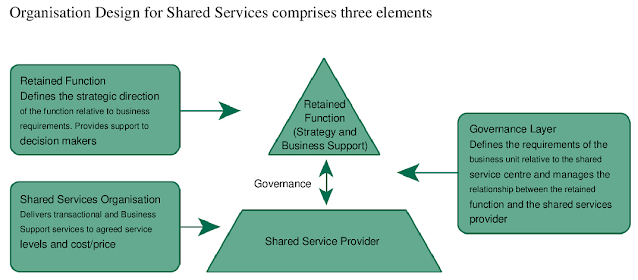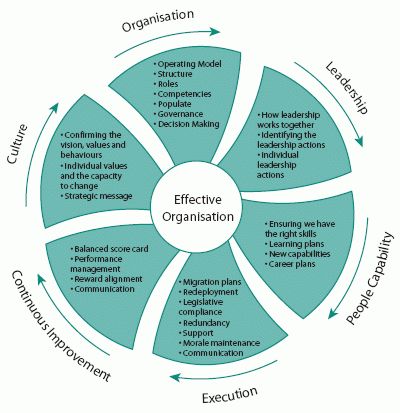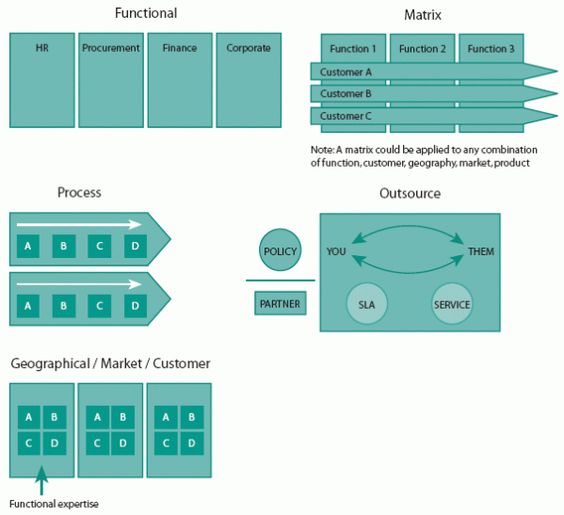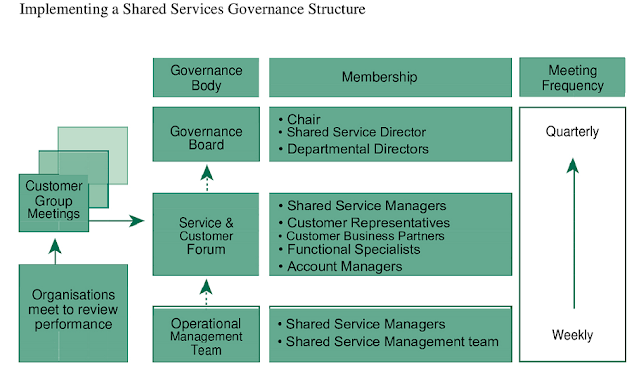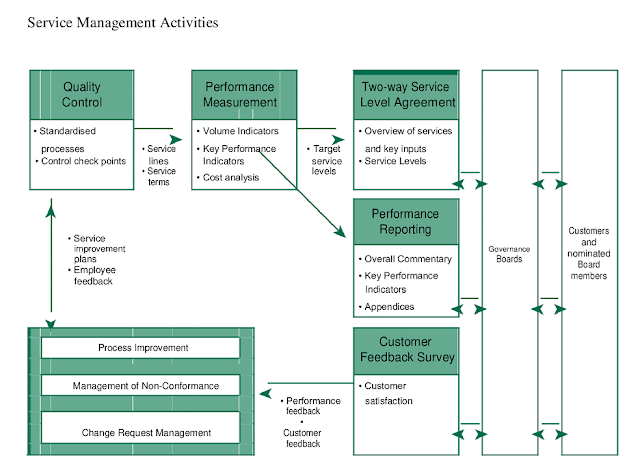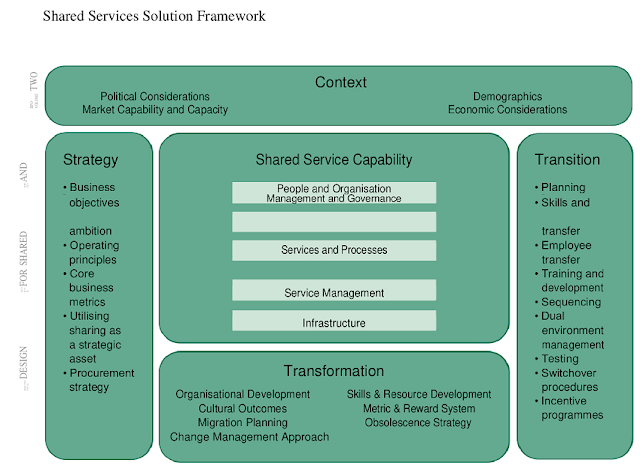Growth is the ultimate test of business vitality, yet questions about it haunt business leaders. How much will we grow this year, and beyond? How much growth do we need? What kind of growth do we need? How should we balance revenue growth against margin improvement? How far afield from our current business should we look for new customers? Once we know where we want to be, how do we get there?
The best recipe for sustained, profitable growth is simple in its basic concept. It requires a capabilities-driven approach — making the most of what you already do well — that goes well beyond traditional market-back approaches, which try to deliver whatever the outside world seems to need.
It is also devilishly difficult in its details, because it assumes you will use any means at your disposal to achieve your goal. There need be no trade-off between current markets and adjacent markets, or between organic methods (such as marketing and innovation) and inorganic methods (such as mergers and acquisitions). You can and should blend all of these, ideally in a dynamic and fast-paced way, as long as they are aligned with the proficiency and advantages you already have.
Thus, before you pursue growth directly, you should have in place the three elements of a clearly defined, coherent strategy: (1) a value proposition that resonates with customers, supported by (2) a system of distinctive capabilities, combined in a way that competitors can’t match, with (3) a portfolio of products and services that are all aligned to the first two elements. You must also be able to deliver on that value proposition, translating concept into competitive position with a viable, sustainable business model that generates profits and cash flow.
You can grow profitably and sustainably only from a position of strength. If your enterprise is struggling to maintain its economic lifelines, then foundational work on strategy, organization, cost optimization, or other factors is needed before any new growth strategy can succeed. Companies that enter new businesses to escape a weak position generally become weaker still, because they move into markets where they lack the capabilities needed to succeed.
Typewriter maker Smith Corona, for example, understood the needs of students and self-employed typists better than anyone else; this helped the company develop a successful line of word-processing computers in the 1980s. But the company couldn’t sustain that business, because its efforts to expand into office supply distribution, kitchen appliances, daisy-wheel printers, and paints had left it without the resources to compete against other types of personal computers. Blockbuster Video sought to protect itself from disruption in the early 2000s by buying Circuit City — an effort to create synergy from two weakened businesses without a clear logic for creating value together.
Let’s say you have that position of strength to start from: a capabilities-driven strategy and the wherewithal to exploit it. From there, you can chart a course toward sustainable and profitable expansion by combining four approaches to growth:
1. In-market leverage: seeking out new growth opportunities among your existing customers in your core market as currently defined.
2. Near-market expansion: pursuing opportunities in unfamiliar sectors or with new products. This approach is also known as expansion through adjacencies.
3. Disruptive growth: responding to dramatic change with entirely new business models and capabilities if and as appropriate. Though important at times, this is rarer than many businesspeople think and should be undertaken only if you have a clear idea of how to link your existing capabilities system to the new one you will need.
4. Capability development: building distinctive organizational proficiency in a way that supports the other three forms of growth. This can be accomplished through a variety of means, including M&A, innovation, and operations improvements.
All four of these topics may seem familiar; they have been discussed over the years at most companies. But the linkages among them are often overlooked. By strengthening those linkages, your company can enter into a cycle of ongoing self-renewal. Most companies exhibiting consistent long-term growth — Amazon, Apple, Danaher, Disney, General Electric, Hyundai, Nike, Novo Nordisk, Oracle, Starbucks, and Walmart among them — have followed and continue to follow this path.
Headroom for Growth
Companies frequently overlook the growth opportunities that are right in front of them. Sometimes they are tempted by attractive-looking opportunities in other markets, or lured by the idea of diversification into other businesses. Sometimes, they simply haven’t spent enough time trying to imagine how their approach in an existing market could be changed to unlock additional growth. The answer lies in finding headroom: potential new business in an existing market.
The headroom for in-market leverage is the customer revenue a company could have beyond its current business, minus that which it is unlikely to get. For example, some fast-food restaurant chains have increased their revenues by selling premium coffee, espresso, and other specialty drinks to their regular breakfast or lunch customers, rather than ceding that business to Starbucks or Dunkin’ Donuts. Their headroom is the total potential premium coffee drink sales, minus the revenue from people who are unlikely to switch to them. Meanwhile, coffee retailers have added more meals to build headroom at the expense of the fast-food chains. Two food and drink businesses that were originally very different have thus evolved into competitors.
Similarly, some cable and telecommunications companies are finding headroom in their current customer base. They are shifting from being TV or telephone service providers to becoming comprehensive sources of digital, information, and value-added services (by offering home control systems, for example). Their investments in broadband lines, stretching into customers’ homes and offices, and their monthly interactions with a broad consumer base (developed over years of being regulated monopolies) give them a platform for this in-market leverage that is very hard for other companies to compete with. To be sure, these new businesses require strong capabilities in customer acquisition and service, in an industry that has often been accused of ignoring consumer complaints. But some cable and telecom providers, such as AT&T, Verizon, and Cox Communications, are now developing these capabilities to help them enter new lines of business.
Determining the size of your headroom in existing markets is a three-step process. First, find gaps between what other companies in the market offer and what customers need, and devise a way to close those “needs–offer” gaps with new or better offers. Second, identify the factors (such as features, incentives, or messaging) that would lead customers to switch to your new product or service. Finally, redeploy, leverage, and improve your capabilities — or, in some cases, add new ones — to close the gap and propel your customers to switch.
Needs–offer gaps can be found in any market. Enormous opportunities for in-market leverage are often hiding in plain sight, accessible to those who can look with fresh eyes at existing customers. One large pharmaceutical company expanded sales by identifying patients who were not taking their medications as frequently as prescribed, and then encouraging them to do so. Video game producers sell additional apps or special in-game bonuses to customers already playing their games. Manufacturers have successfully targeted customers who want more quality at an affordable price (such as those who seek out reviews of more durable appliances), or who want access to features currently available only to top-tier customers (such as smartphone purchasers seeking better-quality built-in cameras). Regional banks have offered customers access to credit with more engagement than global financial institutions could offer.
The levers available to close a needs–offer gap include adding or redeploying capabilities. For example, in retail, making incremental improvements in assortment and packaging, increasing access via a new distribution channel, or simply upgrading the customer experience in a way that outpaces competitors’ offerings. Amazon’s Prime membership is a good example. It doesn’t change any of the products Amazon sells, but it offers free two-day shipping on all purchases in return for an annual fixed fee, further leveraging Amazon’s distinctive supply chain capabilities.
Near-Market Opportunities
When companies think about growth, they often start by looking for “adjacencies” (new nearby markets to enter) that stand out primarily for their market potential. But by rushing to the most seemingly attractive opportunities — the places with hot new technologies or burgeoning consumer populations — they risk diversifying past the point of no return, just as Blockbuster and Smith Corona did. But those high-growth opportunities have probably risen up in response to another company’s successful capabilities play, which will be very hard for another company to compete against.
A better approach is to look for opportunities where you can leverage your own distinctive capabilities, find new customers for your existing products or services, or apply your strengths to new offerings. Begin with a thorough assessment of your own capabilities and their relevance for near-market opportunities. A capability is relevant because either it creates a distinctive economic advantage, such as eliminating costs, or it creates a customer-acquisition advantage, helping you capture prospective purchasers. If you don’t see that direct relevance, be cautious. Some apparent advantages, such as the ability to offer customers a single bundled source for purchases used together, won’t necessarily create real synergies. Summer barbecues may involve the purchase of grills, food, and charcoal briquettes or propane, but it’s hard to imagine a manufacturer in one of these sectors expanding successfully to the others, because of the disparate capabilities required for them.
In your assessment, give yourself credit for non-obvious strengths that will help you grow. For example, you may have overlooked capabilities you can apply in your operations infrastructure — your sales force, financial back office, or IT system — or your customer insights and logistics network. American Express had exactly this type of asset in its loyalty program, which it originally built to enhance its core business, and then extended into a platform that enabled other companies to offer similar services.
When you seek growth in near markets, be wary of stretching your capabilities system so far that the linkage breaks, and your current business model doesn’t apply the way you hoped it would. Leading companies in the chemicals industry, for example, traditionally expanded by leveraging the production system they already had in place. This reduced the costs of both product streams. However, this approach led commodity chemicals companies to enter specialty businesses, whose customers demanded custom manufacturing, hands-on service, and rapid-response design that they couldn’t easily deliver. They had crossed a capability boundary, as we call it, in which the old capabilities no longer provided economic or customer acquisition advantages. As a result, over time the industry has specialized, evolving away from multicompetency conglomerates. Some companies returned to commodities while others migrated to a focus on agricultural products or specialty chemicals.
Capability boundaries also often arise when companies seek geographic expansion. For example, consumer product and retail companies moving from Europe or the U.S. to emerging markets such as India must adapt to radically different requirements and build new types of relationships. Retailers may have to modify store formats, assortments, logistics approaches, and brand positioning for local markets — sometimes to the point where their capabilities system may not easily stretch to accommodate distant locations or cultures, and still take advantage of the same value propositions and capabilities systems that make them successful at home.
In general, you should cross capability boundaries consciously and cautiously. The secret to successful near-market expansion is balancing creativity in how you extend your capabilities with a judicious view of when you are overstretching. Companies that use traditional adjacency definitions or ignore capability boundaries can easily find themselves in an adjacency trap. One famous example involved Sears Roebuck’s acquisition of the brokerage house Dean Witter Reynolds in 1981. This proved that customers didn’t necessarily want to “buy their stocks where they buy their socks,” as one critic put it. In some industries, companies are choosing to cross capability boundaries to survive. For example, as shown in Exhibit 1, convergence among the computer, telecommunications, and entertainment industries is forcing companies to expand their business definitions. Each company carves out its own path: Thus, Google and Netflix are moving from their established software businesses to generate digital television content, whereas other companies such as Apple and Microsoft have resisted the temptation to cross that capability boundary.
Disruption vs. Evolution
A casual look at the business media would suggest that disruption is everywhere, but disruption has become one of the most overused words in the business lexicon. Too often, a rapid, innovative evolutionary change in an industry is confused with disruption. Knowing the difference has significant implications for your growth strategy, capabilities system, and business model.
Most industries evolve continuously, through technological change, business model innovation, and improvements in everyday practices. Evolution affects companies and their customers — lowering costs, creating new needs–offer gaps, and enhancing products or customer experiences. Even breakthrough innovations, which deliver a step change in costs and benefits but do not require fundamental changes in capabilities systems, are not necessarily disruptions.
True industry disruptions are rare. They happen when a technological or business model innovation thoroughly changes or obliterates existing business models and their associated capabilities systems. Disruptions create situations in which every company has to reexamine its capability boundaries, or risk losing its livelihood.
In the music business, the introduction of the compact disc in the early 1980s was a breakthrough innovation that led widespread evolutionary changes throughout the industry. But it was not disruption; it did not fundamentally change the prevalent talent development, promotion, and physical distribution–based business model. Most of the companies that were prominent before the compact disc held on to their positions and practices after it was introduced.
The introduction of digital music files in the mid-1990s, on the other hand, was disruptive. (See “The Portable Music Saga”.) It utterly changed business models, capabilities systems, and supplier–buyer relationships throughout the industry. Internet-enabled innovations have driven many similar disruptions, in businesses as varied as book retailing, journalism, and on-demand dispatch and use of taxis and limousines.
The Portable Music Saga
In-market, near-market, and disruptive growth opportunities often happen in the same market over time. One of the most compelling examples is the market for portable recorded music and sound over the past 50 years.
It started in the 1950s at the dawn of rock-and-roll music, when teenagers desperately wanted music that they could take with them to their rooms and to parties. They carted around portable record players and boxes of vinyl 45 or 33 RPM discs. When the cost of the transistor fell in the mid-1950s, Texas Instruments and Sony capitalized on this needs–offer gap by offering radios that could be easily carried and mounted in automobiles. This manufactured product also helped build the market for recorded music, in the form of vinyl record albums that people could play at home.
But recorded music and the convenience of portability did not exist in a single package, and thus a further needs–offer gap existed. In 1979, Sony showed that it had found a cycle of continuous renewal when it filled that gap with the introduction of the Walkman, a compact device for playing cassette tapes through miniaturized headphones. This dramatic new play for headroom led the category for many years. Sony’s capabilities in designing and marketing small radios served it extremely well in the world of small audio, even after compact discs supplanted cassettes.
Sony faltered in the late 1990s, when its capabilities system, based on consumer devices, was upended. The shift to digital music file formats, such as MP3, required capabilities in computers and software. Downloadable music files had a clear advantage over compact discs in convenience, selection, and price. By 2001 there were 50 different portable MP3 players for sale on the U.S. market. None of them, however, quite fit the bill. Device interfaces were kludgy, downloading and managing music files could be haphazard and difficult, and online platforms could be quirky and unreliable. Some were downright sketchy (remember Napster?).
Enter Apple. This was one of the very few companies with capabilities in user-friendly product and interface design, technological integration, stylish fashion-forward marketing, and the coordination of creative media (which, along with Steve Jobs’s personal star power and friendships with musicians, helped it negotiate with record labels in the extremely insular music industry).
Apple was thus well positioned to make a dramatically successful near-market move; the iPod hit the market in 2001, at first for Macintosh users only, and was soon outselling its competitors. The company didn’t stop there: It pursued headroom within that territory, by opening the iTunes online music store, enabling consumers to buy and manage digital music simply and reliably and syncing with Windows-based computers as well as its own.
With these innovations, Apple filled a needs–offer gap that few other companies saw: It provided a reliable, standardized system that made purchasing, keeping, and listening to music relatively easy. By 2008, Apple had claimed nearly 50 percent of the market for music players. Its nearest competitor’s share was in the single digits. Adding video, games, publishing, and lifestyle apps, along with the iPhone, represented a series of natural in-market growth moves. For the next five years, Apple had a virtual lock on its customers; they were unwilling to switch because of the compelling nature of the company’s seamless offering.
Since 2013, however, a new needs–offer gap has been identified: Streaming media is even more convenient and less expensive than downloads. The online radio service Pandora was the first to fill this gap, and others are rushing to compete: Amazon with a near-market move, and Spotify and Netflix as new entrants. Apple pursued an in-market move with its Apple Music service, introduced in 2015. Apple Music builds on the acquisition of Beats, a startup founded by music industry veterans, which improved Apple’s capabilities for curating and enhancing audio and video content. This new needs–offer gap is still only partly understood, and it’s not clear which companies will be favored. But it is likely that the headroom is not yet exhausted and further needs–offer gaps will be discovered in the audio–video market as technology continues to evolve.
The impact of biotechnology on pharmaceuticals and agricultural chemicals is another good example of the difference between evolutionary and disruptive innovation. Advances in biotech have provided major innovations in pharmaceuticals since the 1980s, enabling life science companies to develop entirely new kinds of genetically engineered drugs for treating diseases such as diabetes and cancer. However valuable these innovations have been, they simply provide another way of introducing molecules into the established regulatory, commercial, selling, support, and reimbursement systems. No major changes in the business models or capabilities systems have been required, at least so far. (Personalized medicines may turn out to be more disruptive.)
In agricultural chemicals, however, biotech has been disruptive. The advent of genetically modified plant cells completely changed the roles that seeds and chemicals played throughout the industry’s value chain. Companies that provided genomics had to extend themselves upstream, downstream, and horizontally. Companies that provided agricultural chemicals had to integrate upstream into seeds, and to combine or partner with downstream companies in the processing and delivery chain. In some cases, agricultural companies had to create new brands at the end-user level to capture the value of their innovations.
Companies can respond to evolution and even step-change innovation by improving, and in some cases by adding to, their capabilities systems. But to respond to a true disruption, companies often need to intentionally cross capability boundaries, adding entirely new capabilities to survive. The Lowe’s hardware chain did this successfully in the 1990s. Traditionally, Lowe’s sold construction materials, mainly to professional homebuilders, through small, full-service outlets. In 1982, Home Depot introduced a disruptive new business model — “big box” stores in a home improvement center format. These outlets were much larger than Lowe’s stores (90,000 square feet versus 15,000) and had much lower operating costs, mainly thanks to labor savings from scale and self-service. Lowe’s struggled to compete for nearly 10 years. Then in 1992, Lowe’s converted its own stores to the new home improvement format and became a strong, successful competitor.
If you respond to disruption by changing your business model and capabilities system, as Lowe’s did, you can’t dabble. You have to commit fully to a new business model, and build the necessary capabilities as soon and as thoroughly as possible.
A Cycle of Continuous Renewal
The goal of a growth strategy is to create continuous renewal so that your top-line revenue increases steadily. As we’ve seen, you need a single viable strategy combining in-market and near-market growth, backed up by the right group of capabilities. In-market growth converts your capabilities into increased wallet share, providing returns that fuel investment. Near-market growth makes the most of the investment by using your capabilities more broadly. Capabilities development makes both kinds of growth more successful. Success in each of these areas reinforces success in the others, and the cycle continues to accelerate as long as you stay in practice.
But where to begin? That depends on where you are right now. The possibilities are best visualized as a matrix, in which the horizontal axis represents the distinctiveness of your capabilities system and its relative fit with the opportunities you have or wish to create, and the vertical axis represents the headroom for growth in your current markets. Most companies fit squarely into one of the four resulting quadrants (see Exhibit 2).
The “poor prospects” lack distinctive capabilities and apparent opportunities, and thus are in a weak position. If you are in this group, your only path to organic growth success — assuming your business survives — is to do foundational work on strategy and execution. Focus on improving your core capabilities systems and value propositions. Only then can you consider either in-market or near-market growth strategies.
If you are in the “capabilities-challenged” group, you have ample headroom for growth, but your capabilities aren’t a good fit for the opportunities. This can happen when a company lets its performance drift, or when its market changes, creating new upsides that require different capabilities. Your growth challenge is adding or enhancing capabilities to capture your available headroom, not chasing unrelated markets.
Other companies are “headroom-challenged.” They are successful in their markets as currently defined, but have little upside: Growth prospects are leveling off. If you are in this group, start looking for previously unnoticed opportunities for in-market growth, and leverage or improve your distinctive capabilities to exploit them. Alternatively, seek near-market opportunities by redefining or reimagining your business. A hardware or software supplier may redefine itself as a solutions provider (many tech companies have done this). A search-engine company can become an information management company, as Google has. A food company can recast itself as a nutrition company (consider Nestlé). Redefining your business puts you in the “capabilities-challenged” group, where new skills will be required, and risk may increase — but so will opportunities. As your capabilities systems improve in response to their deployment in your new near-market expansion, you will move into the “growth leaders” category.
If you are already among the fortunate companies in that quadrant, the key to sustained, profitable growth is a balanced mix of all the levers we have discussed, tailored to your company’s needs and culture. Continue to mine in-market opportunities, to use your insights and talent to capture valid adjacencies, and to reimagine your capabilities as necessary. From time to time, you’ll hit ceilings to your headroom and need to expand into new markets or build new capabilities. You may even face genuine disruption. Then you’ll move around the cycle again — identifying new headroom for growth that represents a good potential fit, developing the distinctive capabilities you need, and returning to your position as a growth leader (see Exhibit 3).
Sustainable growth requires building this type of continuous renewal cycle. Your pace around the cycle may be set by the clock speed of your industry: Technology firms cycle more quickly than chemicals companies. But no matter how fast or slow your industry, your potential for continuous growth depends on how well you can manage these dynamics — how skilled you become at seeing potential for growth, and building capabilities to realize that potential.
Successful companies avoid getting stuck in the “headroom-challenged” category, or drifting into “poor prospects” territory, by continuously renewing their capabilities. You can build or expand some capabilities through organic methods such as innovation and marketing, you can “borrow” other capabilities through alliances with other enterprises, and you can buy still other capabilities through mergers and acquisitions.
What about M&A?
Mergers and acquisitions are so closely associated with expansion that the term inorganic growth is frequently used to refer to such deals. But this terminology can be misleading. Inorganic methods, such as acquisitions, are not actually a form of growth. They are capability acquisition tools. An M&A deal does not automatically expand a company’s customer base or revenue stream beyond what the two merged companies previously had available to them. It may increase potential for growth, but the company still has to put its new capabilities to use to realize that potential.
Thus the most successful acquirers are those that acquire with a capabilities mind-set. They outperform those who are not capabilities-driven by more than 14 percentage points in total shareholder returns. (See “
Deals That Win,” by J. Neely, John Jullens, and Joerg Krings.)
Sustainable Growth in Practice
One way to ensure this cycle of continuous renewal is through capabilities chaining: developing new capabilities that complement your existing ones, so that you can use all of this proficiency to enter a new line of business. For example, to expand from the photography industry to healthcare, Fujifilm is using its existing capabilities in material science, engineering, and quality manufacturing. To complement these, it bought two firms involved in regenerative medicine research: Cellular Dynamics International (based in the U.S.) and Japan’s Tissue Engineering Corporation (J-TEC). In March 2015, Fujifilm chairman and CEO Shigetaka Komori told the Japanese newspaperNikkei, “If we combine the three companies’ technologies [those of Fujifilm, J-TEC, and Cellular Dynamics], they can be put to use in a variety of…applications, such as tissue and organ regeneration…. We’re aiming to become the world’s top regenerative medicine company.”
When you create your own prospective capability chain map, draw pragmatic linkages between what you do well now and the opportunities you see ahead. The map shows what capabilities are needed for each new step, and identifies ways to take that step successfully.
The art of growth is balancing and sequencing all the levers we have discussed: in-market leverage, near-market expansion, and capability development; organic tools, alliances, and mergers and acquisitions. Capabilities chaining brings your innovation and inorganic options together into one coherent make-versus-buy framework. As an example, we have mapped the growth of some of General Electric, which has used capabilities chaining in this way since the 1950s (see Exhibit 4). You seek an approach tailored to your company, combining insight and creativity with pragmatism and execution. And whenever you become too settled and secure, you look for new headroom and begin the cycle all over again.

Cintas Corporation, which provides uniforms and specialized services to companies, is an example of a highly successful company that has created this type of continuous growth cycle. Cintas began in the Great Depression as an industrial laundry that reclaimed and cleaned rags for local factories around Cincinnati. The company later began renting towels to customers, replacing them or repairing them as needed. Over time, Cintas created a distinctive set of capabilities and its own business model — “The Cintas Way” — combining excellence in plant operations, a highly refined logistics capability, and service innovation with customer knowledge and sales and service networks. The company has grown steadily through an integrated evolutionary approach. Cintas’s cycle of continuous growth included three major approaches to expansion (see Exhibit 5).

1. In-market leverage. Growth accelerated as the company pursued in-market opportunities, first renting (as well as laundering, repairing, and replacing) uniforms for factory workers, and then additionally offering uniforms for front-office personnel and specialty items such as flame-resistant garments for specific needs. At the same time, Cintas worked with manufacturers to develop new materials that would be resistant to staining, that would stand up to repeated washing and need little ironing, and that would provide protection as well as style.
2. Near-market expansion. Cintas enters new markets and geographies by cautiously testing whether its core business model will prosper before committing to those opportunities. The company has leveraged its capabilities system by adding other clearly linked services, including renting and cleaning floor mats; providing washroom supplies; and managing, cleaning, providing, and servicing first-aid kits and fire extinguishers. The company moved into adjacent businesses by offering services to existing customers such as employee safety training, and by expanding its customer base to include companies in other industries such as hotels and airlines.
3. Capability development. Cintas was also able to realize when it had reached the limits of its capabilities system. After entering and building a successful document storage and imaging business to offer additional services to customers, the company figured out that this new business was driven as much by commodity prices and real estate as by Cintas’s own strengths in logistics, services, and operations. In 2014, Cintas sold this business. Finally, Cintas has used mergers and acquisitions to access and test new capabilities and new services, and expanded by rolling up smaller companies in similar businesses, where the company could further leverage its capabilities.
This cycle of continuous growth has given Cintas strong and consistent financial performance over the decades, and enabled the company to successfully weather the post-2008 downturn. Today, Cintas is one of the largest business services suppliers in North America; it employs 30,000 people, serves more than 900,000 customers, and maintains 430 facilities, including six manufacturing plants and nine distribution centers.
Companies that have struggled to grow consistently tend to think about growth in terms of contradictions: sticking with their current markets versus moving into new ones; leveraging versus enhancing their capabilities; growing their current business versus expanding via M&A; “staying true to themselves” versus leaving their corporate identity behind — but these are all false choices. The art of continuous growth involves reconciling activities that only seem to contradict one another. Combining them will yield a capabilities-driven strategy that will generate continuous growth.
